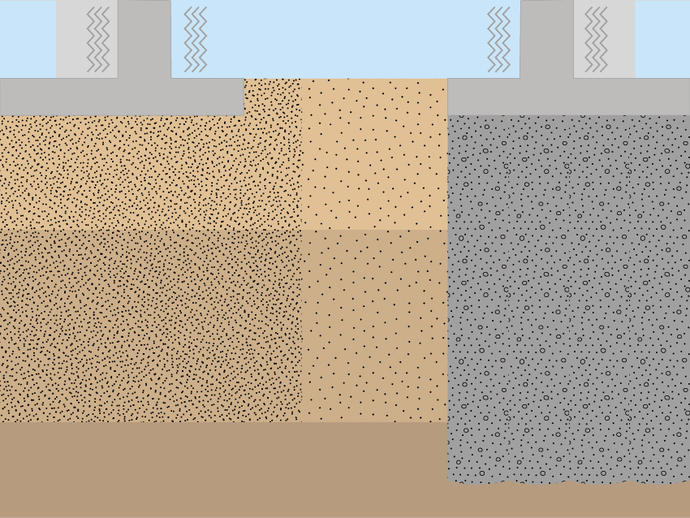Liquefaction is a common problem in earthquake-prone areas where soils lose strength due to the ground motion and behave like a viscous liquid, damaging overlying structures. Keller can find the optimal solution for liquefaction mitigation.

Common Uses
- Prevent liquefaction-induced bearing capacity failure
- Control seismic settlement
- Prevent lateral spreading
- Prevent reduction in deep foundation support
When seismic forces affect saturated, loose, granular layers, the loose soil structure contracts, generating excess pore water pressure, accompanied by a reduction in soil strength, this can cause the soil to behave as a viscous liquid.
The consequences of liquefaction for shallow foundations include the loss of bearing capacity, excessive settlement, lateral spreading, and flow failures. In deep foundations, liquefaction can cause a reduction in lateral capacity, additional down-drag forces, and/or additional demand on the piles from lateral spreading or flow failures.
The presence of liquefiable soil does not mean the building site has to be abandoned or that deep foundations are required. In situ remediation of loose, cohesionless soils has become common in geotechnical engineering. Earthquake drains can provide adequate soil liquefaction mitigation by dissipating the pore pressure before reaching critical levels.
We are actively involved in research related to earthquake engineering. Working with owners and their geotechnical engineers, we can assist in selecting the optimal solution.